-
Home
-
Shop
New -
Explore
-
Support
-
Track Order
Mar 24, 2023
Author:Lisa Martinez
Obesity in cats is a very common but triggering issue, and the worst part is that it's on the rise. Obesity in cats is a negative health trend that can cause serious consequences to our feline friends if it's not treated and controlled at the right time. Obesity in cats risks your beloved cat's life expectancy and can lead to other acute health issues like diabetes and heart problems.
The causes of obesity involve many factors that we will discuss in this article. We will also be covering the signs and symptoms of obesity in cats.
Everyone likes big and fat cats, but too much fat can be alarming as obesity in cats affects the overall health and well-being of your cat. Some people find determining if your cat is obese a tough task; however, knowing the ideal weight for your cat can make it easier. And you don't need to have the reading scales to know that your cat is getting obese or overweight, as you can notice the changes in its body through these body parts.
Ribs: If your cat has an ideal weight, you can feel its rib with some fat coverage when you hold it, while in the case of an obese cat, their ribs are not palpable, and you would struggle to find the ribs underneath the belly as it's covered with a heavy layer of fat.
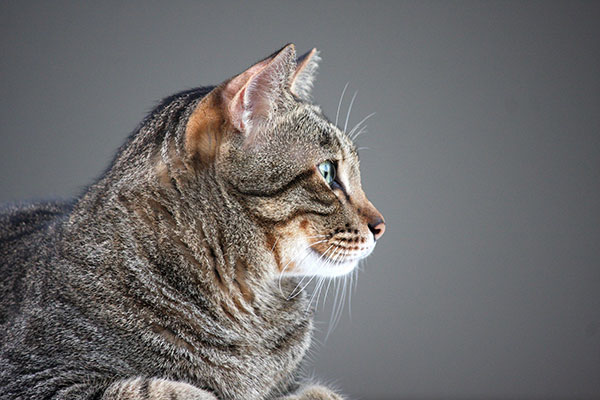
Waistline: One of the most visible signs of obesity in cats is the loss of a noticeable waistline. When a cat is obese, you can't see its waist if you look at them from overhead. If your cat's waist looks bigger around the middle, you must start the treatment for weight reduction because healthy cats have a slight waist.
Abdomen: Another symptom of obesity in cats is that the belly of an obese cat looks bloated and perceptibly round. You can notice this change by looking at your cat from the sides. An overweight cat has a rounded abdomen, whereas a cat with an ideal weight has a little tuck below its ribs.
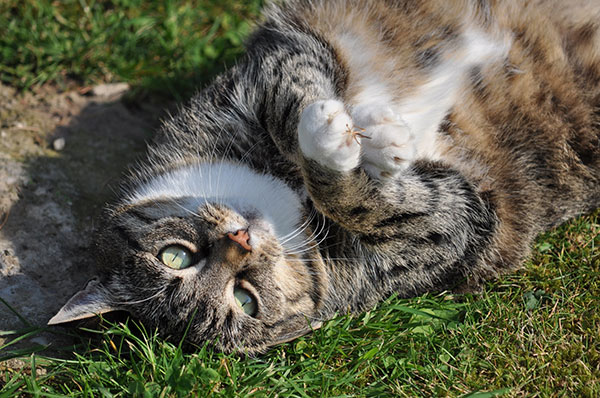
Backbone: A healthy and underweight cat's spine is noticeably visible; the cats with healthy weight have a thin, fat coverage over their spine. While you can't see the spine of an obese cat, you would face difficulty finding it.
Excessive weight gain changes the entire lifestyle of your beloved cat from its activities to routine. Everything gets disturbed by this change in her body. Besides noticeable weight gain in its body, many other symptoms show that your cat is gaining some extra pounds, including the following.
●The cat finds difficulty in climbing, jumping, and climbing; even climbing the stairs becomes a task.
●The cat becomes inactive and spends time lying down and resting. It even becomes unwilling to roam around and get up.
●One clear symptom is that the cat’s collar gets tighter as it gains extra kilos.
●An obese cat has less frequent bowel movements; it becomes hyper-acidic and starts farting a lot to pass the gas frequently bowel movement.
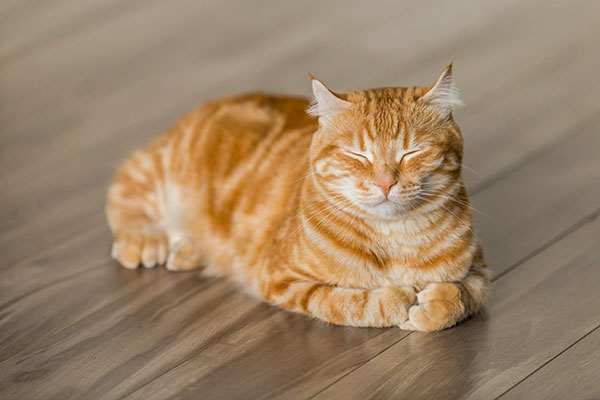
Obesity is very common in cats, just like humans, and there are a variety of reasons involved that causes obesity in cats. These causes include overage, lack of physical activities and exercises, overfeeding and slow metabolism, to name a few. Usually, weight gain happens when the body doesn't expend the energy it has consumed in the form of calories, and this excess energy in the body then becomes fat.
Below we have mentioned the few main causes of obesity in cats:
1.Over Feeding
Your cat's feeding habits are major in weight gain; normally, the cats that follow the free feeding style are obese and overweight. Especially foods like dry food rich in carbohydrates and fats lead to weight gain.
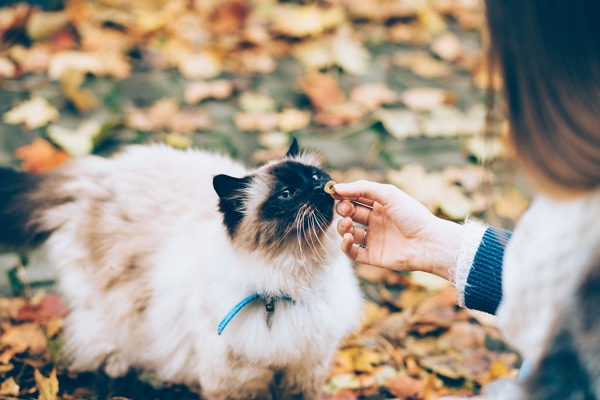
2.Inadequate Physical Activities and Exercises
An adequate amount of physical activity ensures good health, but domestic cats don't get the substantial amount of physical activities done by hunting and preying, causing obesity. The indoor cats don't do the exercises that a body needs to combat to burn the calories they consume and combat obesity.
3.Old Age and Genetics
Age also plays a great part in causing weight gain, as older cats have a slower metabolism and lesser physical activities. Cats, as they age, become more sluggish and dull, making them sit and gain weight. At the same time, poor genetics also causes obesity; some cats have weight gain in their genes.
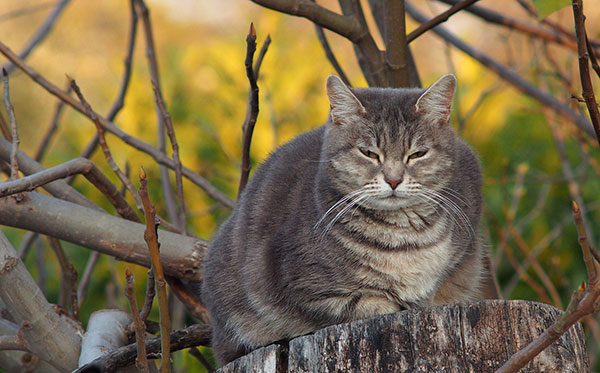
4.Neuter Status
Many cat owners do castration in cats to avoid breeding and to control the population. This process is called neutering in male cats and spaying in females. Neuter status of cats also causes obesity; a neutered cat has a decreased metabolism and strong appetite that also triggers weight gain.
Obesity in cats risks life and can be extremely dangerous as various health problems are linked with weight gain. An obese cat can potentially get a wide range of medical illnesses that can be life-threatening.
Cardiovascular disease: Obesity in cats can cause many diseases, including cardiovascular problems. Cats with more than ideal weight are prone to develop cardiac hypertrophy, vascular hypertrophy, and other heart-related issues.
Shorter Life Expectancy: Obese cats have a shorter lifespan than their ideal-weight counterparts. According to the findings of a study, obese cats have a three times higher mortality rate than normal ones.
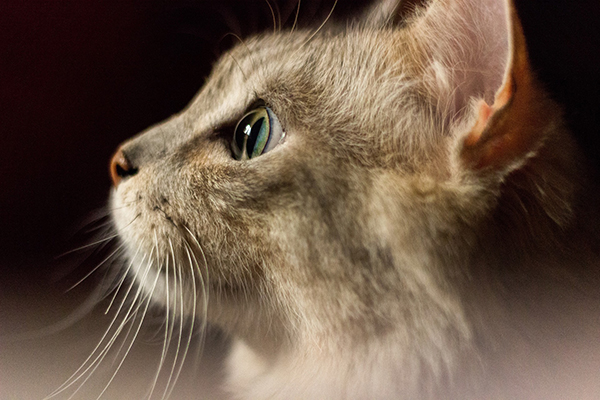
Reduced respiratory functions: Weight gain also causes breathing and other respiratory problems. Overweight cats usually get impaired pulmonary function as the volume of their lungs decreases.
Arthritis: Obese and overweight cats are more prone to developing osteoarthritis. The extra weight damages the joints and bones, and fat releases inflammatory cytokines that weaken the joints.
Kidney Problems: Kidney-related diseases like glomerulosclerosis, hypotrophy, and enlarged glomerulus are common health problems in obese cats. Lower urinary tract disease is commonly diagnosed in overweight cats, and these issues largely affect overall health.
Diabetes Mellitus: Obese cats are prone to developing insulin resistance; in this case, the body doesn't react to insulin, resulting in impaired glucose metabolism. Diabetes mellitus is also a chronic disease that is often linked to obesity. Due to obesity and excessive weight, the tissues become less sensitive to insulin, leading to diabetes mellitus. And this chronic illness can be life threatening for cats as it further damages other body parts functioning. Thus, weight gain in cats should always be challenging as it causes many deadly diseases.
Weight reduction is a slow and difficult process; it doesn't happen in days but takes a year and more to fall into the ideal weight range. A rapid weight loss plan can cause serious health conditions in cats, so pursuing the gradual process is recommended. From altering their diet and activities to adding exercises and regular vet visits to your cat's routine, you can help your cat reduce the extra fat she has put on and ensure a healthy weight regime.
Your cat's eating habits play a great part in causing weight gain, especially the complimentary food you provide them makes them gain rapidly. The dietary plan can play a vital role in treating.
You should gradually reduce and modify your cat's daily food intake; especially cutting out the food that causes weight gain would help your pet to lose weight. Scheduled feeding is essential in treating obesity as overweight cats are habitual of free feeding, so ensure you only provide them food at the designated time.
If you cannot follow scheduled feeding for your cat, you can get an automatic feeder to serve the purpose. WOpet automatic pet feeder is the best option for following a scheduled feeding routine. This product that features personalized mealing calls helps you remember the feeding time through alarms and makes your weight loss task much easier. It also comes with disposable bowl liners that help keep your food oil-free and the bowl wash-free. The best function of the automatic feeder is that it has a memory feature through which you can continue your scheduled feeding even with power failure.
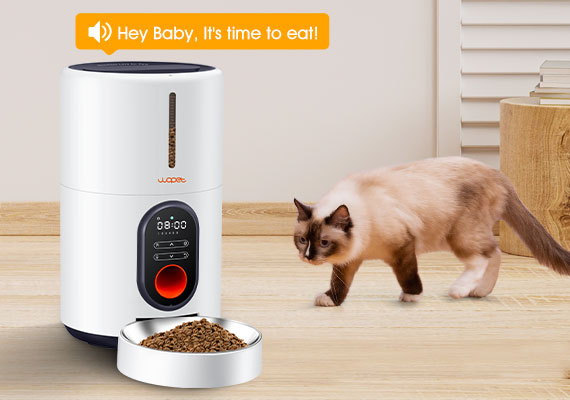
Regular checkups with the veterinarian are very important as your vet will provide diet modifications and other alternatives for weight loss. He will also tell you the exact reason for obesity, as it could be due to the hypothyroid medical condition that causes weight gain. So, proper and regular vet checkups are a must for treating this issue.
Exercise plays a crucial role for a healthy lifestyle and body, including humans. A sedentary lifestyle doesn't only make one obese but also causes other health issues. Involving your cat to perform adequate exercises can also help in maintaining a healthy weight. A normal cat usually needs at least 30 minutes of exercise daily, you can also split this time into short sessions if your cat isn't willing to do it, but exercise is a must if you are looking for weight reduction.
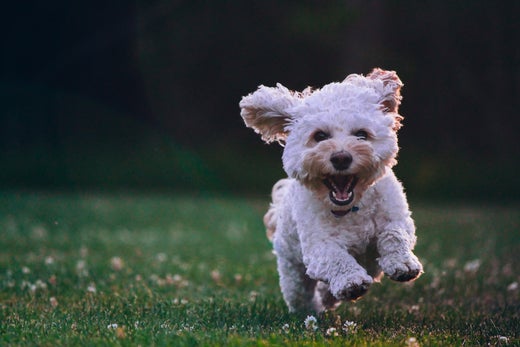
Now that you have started fat-burning sessions and diet for your overweight pets, tracking their weight is very important. Regular weight monitoring is a must as it would help you determine the positive result of your hard work and how many calories you have burnt by changing your cat's lifestyle.
High-quality food with high protein is crucial in weight management, and calorie control is the key element of weight reduction. Hence, It’s suggested to use canned wet food as your cat’s food to treat obesity as it is rich in protein and has a higher water content that works great in maintaining a healthy diet.
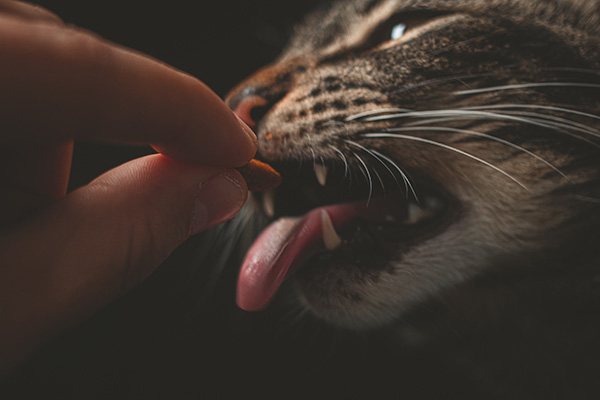
Increasing your cat's activity level can also drastically change her weight. Allow your cat to be involved in outdoor activities or play outside, as the indoor atmosphere is slightly difficult for cats to stay active. You can also plan different play sessions with your cat to make it indulge in moving activities. You can use food puzzle toys and moving toys like robotic mice to involve your cat in entertaining activities. These play sessions will also help her exercise willingly and make it become an active and healthy pet.
Popular Post
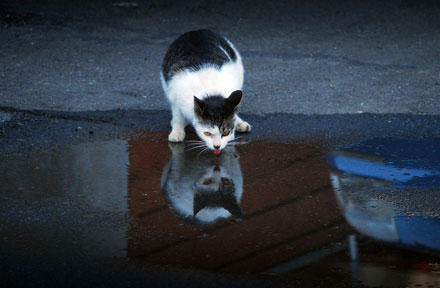
Why Does My Cat Cough After Drinking Water? 8 Potential Reasons
Mar 13, 2023
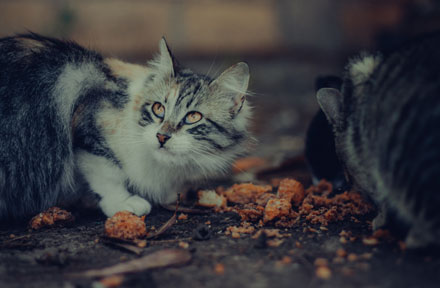
My Cat Only Eats A Little at A Time - What to Do?
Feb 27, 2023
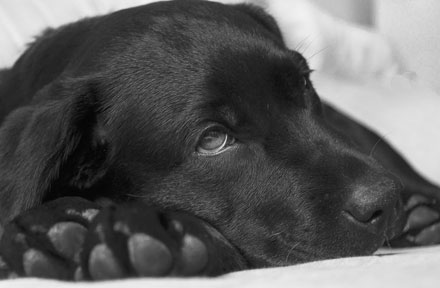
What to Feed a Sick Dog With No Appetite? [2024 Guide]
May 16, 2023

Why Is My Dog Being Destructive All of A Sudden?
Feb 04, 2023
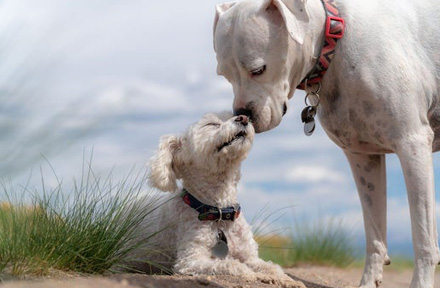
Do Puppies Miss Their Moms
Feb 11, 2023
Copyright © 2024 WOPET. All Rights Reserved.